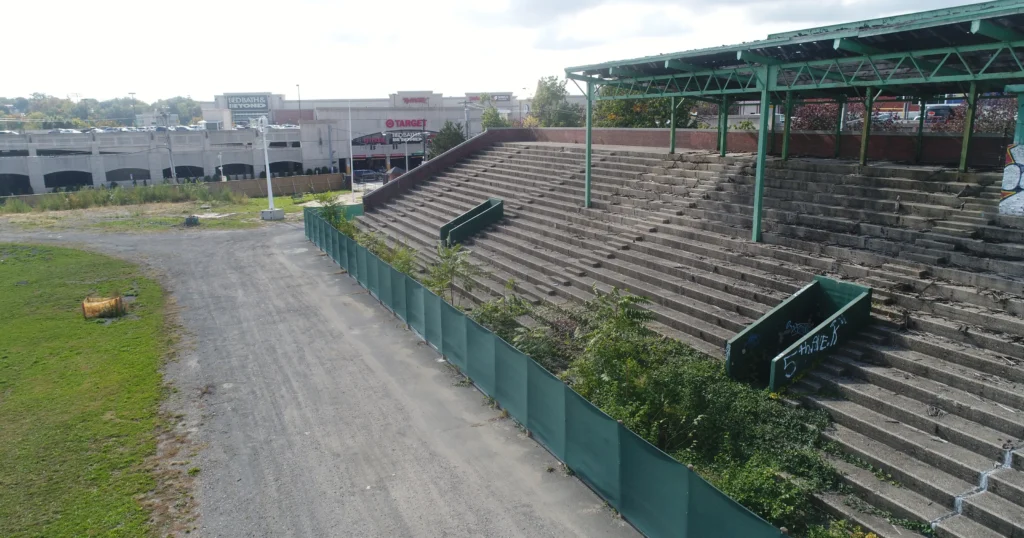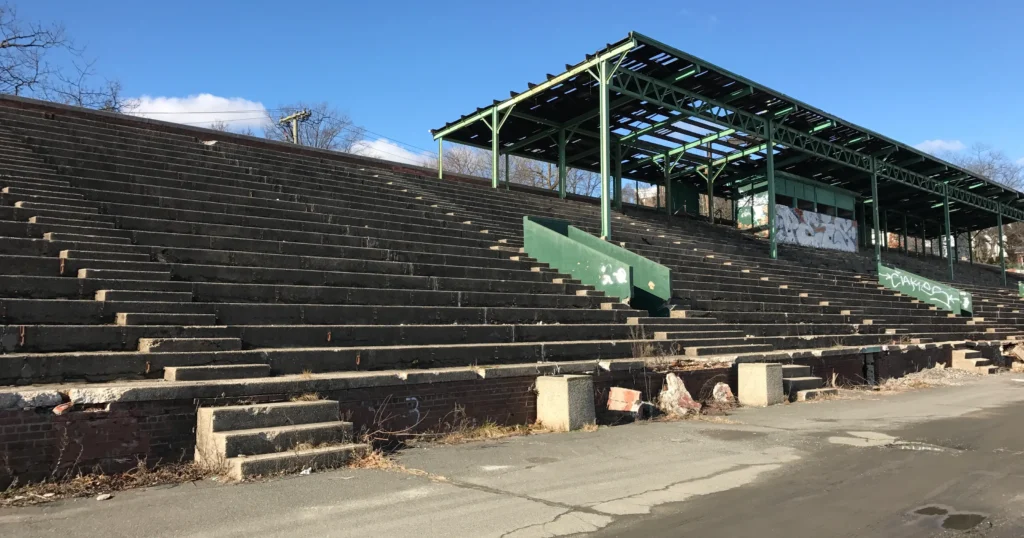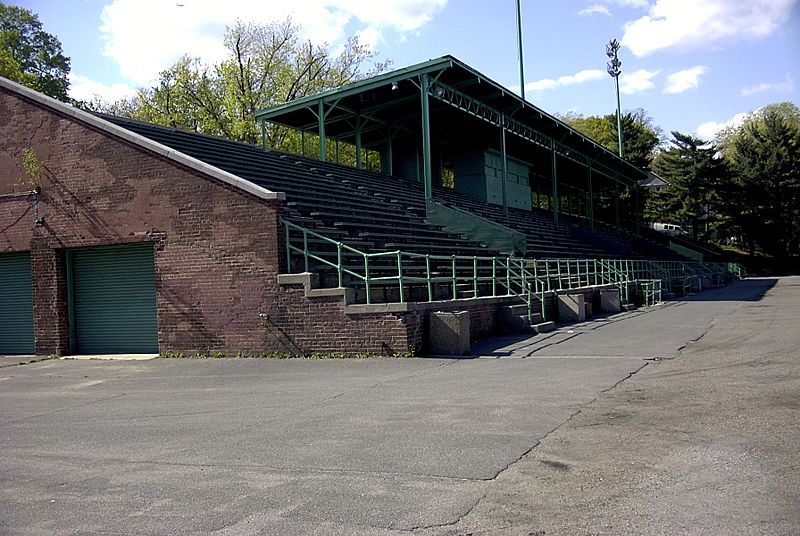Reflections on Mount Vernon’s Evolution in Music:
I recently stumbled upon a youtube clip (below) showcasing a concert at the newly renovated Mount Vernon Memorial Stadium in 2023. Watching it, I was swept back 40 years to my first breakthrough concert in 1984, where I headlined Run-DMC, The Fat Boys, Dr. Jekyll and Mr. Hyde, and more. Then and now, the contrasts are stark — a symbol of how time, money, and culture have transformed both the stadium and the industry.
A Stadium Reborn
Today’s stadium boasts millions of dollars in renovations, featuring a brand-new field, updated seating, modern infrastructure, and a palpable energy. This isn’t the weathered stadium of my youth but a gleaming centerpiece for community events, reborn with fresh vigor. In contrast, when I organized that 1984 concert, the field was a relic from the early 1930s, aged and worn but filled with character and history. Back then, it wasn’t a question of aesthetics but survival — we made it work with what we had, under circumstances that were often challenging.








The “New Rules Festival” held here in 2023 embodied this rejuvenation. It had the backing of well-funded sponsors, with modern staging, professional lighting, and a sound system I estimate to have cost around $10,000. Such luxuries were absent in my day. In 1984, the sound system was literally bootstrapped: a local DJ’s setup, a 200-foot power cable I’d purchased myself, and a flatbed truck that doubled as a makeshift stage. The entire setup was DIY, but it was enough to shake the ground and ignite the crowd.
A Changing Lineup and Audience
This year’s lineup, headlined by Jamaican artist SCRPTIID, reflects a globalized era of music where artists maintain intimate connections with fans through social media. SCRPTIID, born Romario O’Shane Hanson, brings a fusion of dancehall, reggae, afro-pop, and rock, echoing the international appeal that now defines modern festivals. The early crowd, numbering around 5,000, was lively and connected, drawn in by targeted branding, social media outreach, and grassroots promotion within the Caribbean community. However, as the night progressed the crowd easily swelled to 10,000 participants. It was such a spectacle that anybody driving by likely found parking and “fell in” to enjoy to event.
In 1984, without the aid of social media or digital promotion, our draw was raw word-of-mouth, relentless flyer distribution, and local buzz. Even so, our concert pulled nearly 5,000 attendees, filling the stands and spilling into the aisles. This was before artists had global platforms like MTV or Instagram to elevate their reach. Yet, Run-DMC, The Fat Boys, and Dr. Jekyll and Mr. Hyde held magnetic appeal, fueled by MTV’s powerful influence, and that year, we witnessed the world premiere of Run-DMC’s iconic “Rock Box” video — a game-changer for hip-hop on a global stage.
However, this is not about the numbers. This is about the push and pull to put a concert together at age 19, with the uphill climb created by Walter Norman, and how my struggle to succeed contrasts with today’s promising Mount Vernon landscape. This is where things get spicy…



Behind the Scenes: Taking Risks to Make It Happen
In 1984, Mount Vernon’s Recreation Commissioner, Walter A. Norman Jr., threw every conceivable hurdle in my path. He tried to shut down my concert, voicing his disdain for hip-hop and hip-hop culture. He told me bluntly, “I’m gonna make it incredibly difficult for you to succeed with your event. I don’t agree with your hippity-hop, and I don’t believe it’s good for our city.” This outright abuse of authority became a force I had to fight every step of the way.
To help promote the 1984 concert at Memorial Stadium, I took a risk by bringing the Force MDs to Mount Vernon High School, and they performed a little impromptu acapella performance there in the lunch room. Here’s an excerpt from my memoir “The Night Puff Tried To Kill Me” where I detail the encounter: “In a daring move, just days before the show, The Force MDs did me a huge favor where we snuck into the Mount Vernon High School cafeteria and the group performed a surprise a cappella gig there at my alma mater. We orchestrated a covert entry, sneaking through backdoors and corridors, until suddenly, in the heart of the lunchroom, the Force MDs erupted into song:
“Let me love you in the sunshine
Let me hold you, baby, all night
Let me touch you in the moonlight
Let me love you, gonna make you all mine”
It was unprecedented, unpermitted – a fleeting, exhilarating moment. And whoever got to see it was blessed. And as we hastily retreated, school security intervened, leading to a dramatic chase and showdown at the principal’s office. While I played innocent, the group discreetly slipped away. There were no injuries, no police, no charges – just me, at the center of a harmless yet historic escapade. “
That’s right, I didn’t hold back. I set everything up, poured my own money into the promotions, and was fully prepared for the risks. Back then, hip-hop wasn’t yet widely embraced; we were creating something from the ground up. That event taught me the lengths I would need to go to bring my vision to life. There was no back-up, no guarantee of ticket sales, and I handled everything myself — from organizing logistics to promotional strategies.
In contrast, the organizers of the 2023 show likely didn’t need to take similar risks. Their event was backed by funds, marketing, and a production team that could handle setbacks with ease. I wonder if any of them had to fight as I did, facing officials dead set on shutting them down or proving that hip-hop had a place in our community. They probably never had to knock on doors, pitch the vision, or take personal financial risks. They probably didn’t have to plead their case with local leaders, as I had to, or face the disrespect and opposition of city officials.
The Price of Passion
For the 1984 show, the stadium rental cost me $150; the flatbed truck was $75; the DJ and power cable together totaled around $1,500. at best. Despite the limited budget, I managed to pull off a concert that would become a defining moment for hip-hop. Today’s festivals benefit from sponsorships and partnerships, minimizing the burden for organizers. They didn’t face a Walter Norman, intent on making things difficult, nor were they subject to the disrespect I endured. I had no corporate sponsors, and every step was bootstrapped and bootstrapped hard. I built that event alone, with no digital reach, no PR team, no event sponsorship.
Norman’s disdain for the event, hip-hop, and, by extension, the community was clear. When he passed away in 2009, I couldn’t help but feel a sense of justice. Let this commentary serve as “my spitting on his grave” — for the way he went out of his way to disrespect me and abuse his power in 1984.









Legacy and Reflection Looking back, that 1984 concert was more than a show — it was a statement, a leap into uncharted territory that left a lasting impact on Mount Vernon’s music scene. It brought MTV, WBLS, and the heart of hip-hop to a small community in ways no one had thought possible. I did it without corporate backing, without polished infrastructure, and without the ease of digital promotion. I built it from the ground up.
Today’s festivals benefit from the groundwork laid by those who dared to break boundaries and challenged the status quo. As I reflect on the transformation of Mount Vernon Memorial Stadium, I see not only a renovated field but a testament to resilience, creativity, and the ever-evolving power of music.
In 1984, it was about pushing through opposition and taking a stand. Today, it’s about honoring that journey and recognizing the platforms that continue to elevate music’s reach across generations. To the promoters of the 2023 New Rules Festival — congratulations on bringing vibrant, globally impactful music back to Mount Vernon. You’ve continued a legacy that started with a dream and a flatbed truck. Here’s to the power of music, community, and progress.





:max_bytes(150000):strip_icc()/TAL-hotel-courtyard-CASADRAGONES1124-b626a84511a54004acaae464b2fd103f.jpg?w=1068&resize=1068,0&ssl=1)